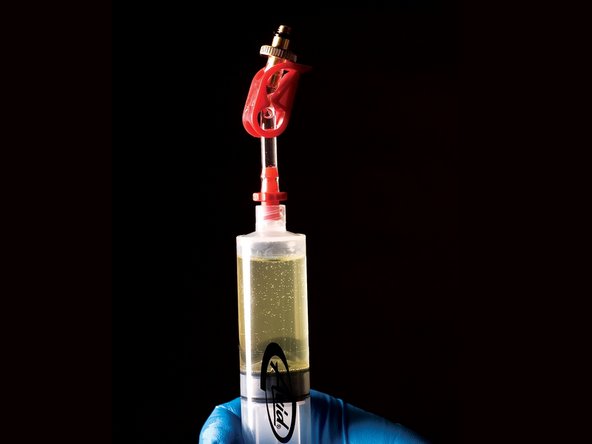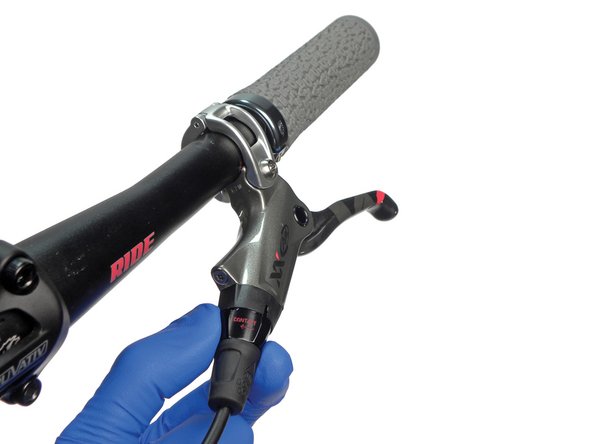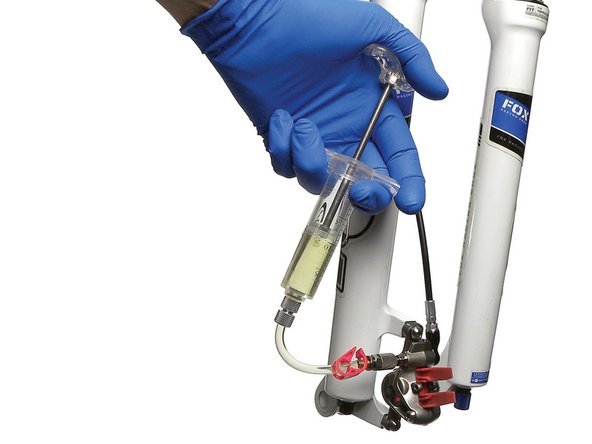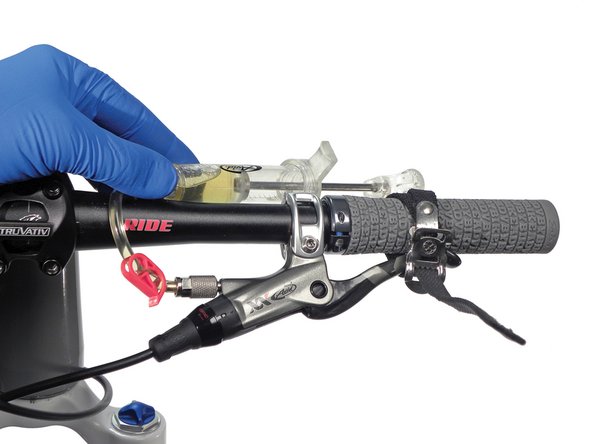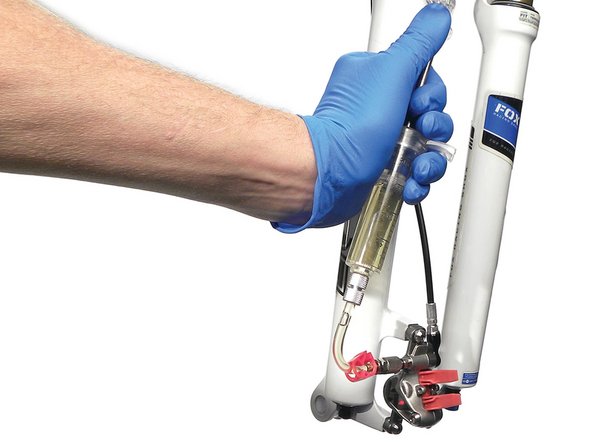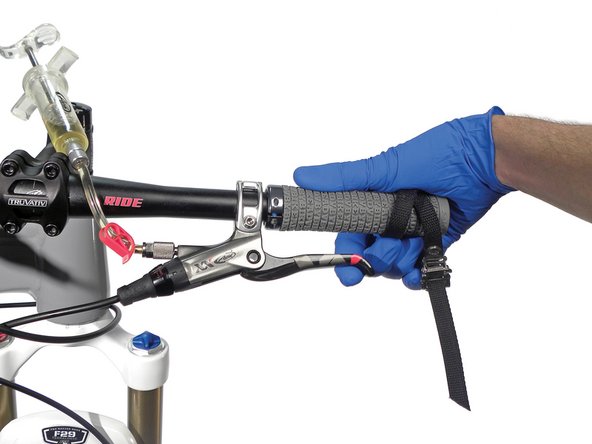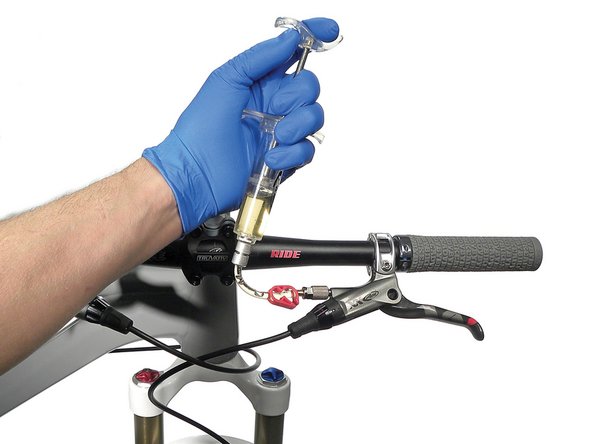Introduzione
Use this guide to replace the fluid in and bleed the air from your Avid hydraulic caliper brakes.
Cosa ti serve
-
-
Remove the wheel of the calipers you are going to bleed, and remove the brake pads.
-
Install Avid® brake block.
-
-
-
Measure from the center of handlebar to the tip of brake lever. The distance should be no more than 80 mm.
-
-
-
Check to make sure the half-full syringe is free of bubbles and that the tubing clip is closed.
-
At the caliper, remove bleed port screw using a T10 Torx driver.
-
Screw is located in the center of the banjo bolt that attaches the hose to the caliper.
-
Remove port screw and insert the syringe into the fitting.
-
-
-
-
Open tubing clamp clips on both syringes.
-
Hold the lower syringe to help prevent any air from entering the caliper body.
-
Push the lower syringe plunger to move fluid through the system and out into the lever syringe.
-
Inspect for air bubbles.
-
Inspect for dirty or contaminated fluid
-
Push lower syringe plunger until mostly empty of fluid.
-
-
-
Open tubing clamp of syringe at lever.
-
Pull back on the plunger to create a vacuum, then push the plunger down.
-
Pull the brake lever slightly and allow it to snap back to help purge any bubbles remaining in lever body.
-
Repeat this process 10 times, or until no more bubbles appear in the tubing.
-
To reassemble your device, follow these instructions in reverse order.
To reassemble your device, follow these instructions in reverse order.

